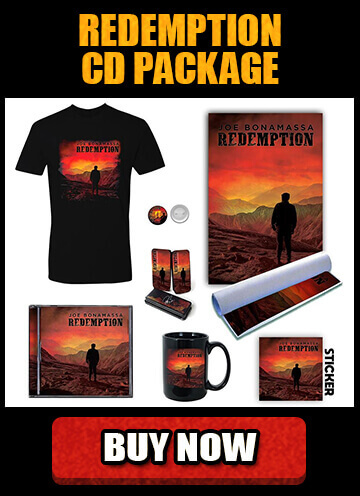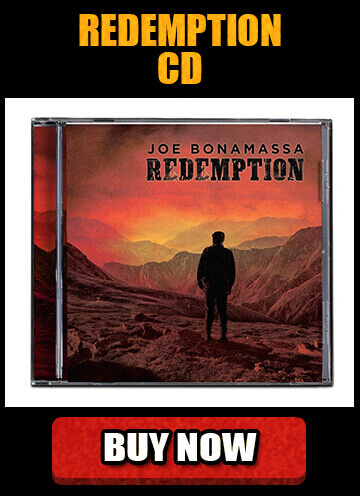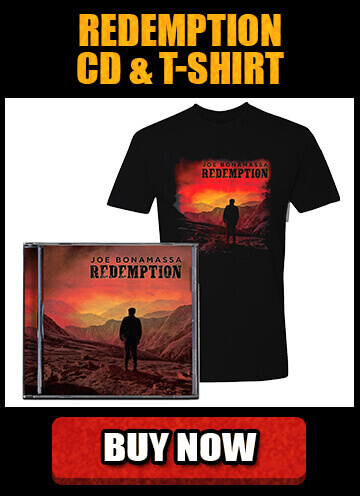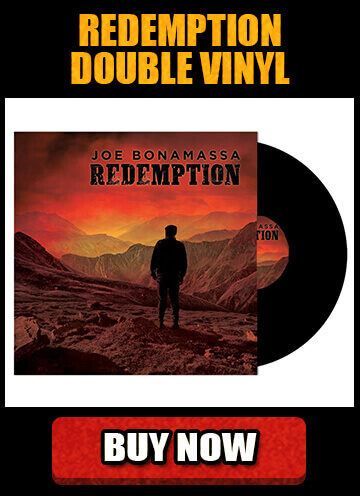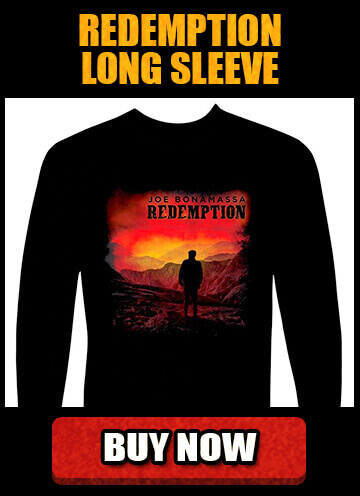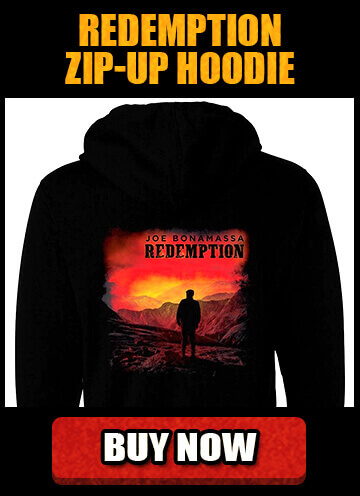



The Nerdville Redemption: Tone Can Set You Free
As he releases his 13th album, Joe Bonamassa confronts his inner demons and reveals how salvation comes in finding your own sound
Richard Bienstock
Sep 6, 2018
Pull up to the entrance of Joe Bonamassa’s Los Angeles residence and you’re greeted by a large glowing sign that’s proudly emblazoned with the phrase Welcome to Fabulous Nerdville, California. The display is a nod to the famous signage at the southern end of the Las Vegas Strip. And indeed, for a certain type of nerd — one that hyperventilates at the sight of a ’59 Les Paul Burst, a ’54 Strat or a room full of vintage Fender tweed amps — Bonamassa’s home is a guitar gear jackpot.

Just how much equipment is currently housed at Nerdville? Bonamassa estimates it’s somewhere south of 1,000 guitars and amps — but maybe not too far south. “When we go out on tour, I always say, ‘When you have more guitars — and nicer ones — on the bus than most shops have on their walls, you know you have a problem,’” he remarks with a laugh. Whatever the actual number, it’s safe to say Bonamassa is a long way from his first instrument, an Erlewine Chiquita that he “got from Santa” when he was just four years old. That guitar, however, is no longer part of his collection. “The thing with being a collector is that you horse-trade your way into trouble,” he says matter-of-factly.
But one man’s trouble is another man’s — or, in this case, the same man’s — treasure. To be sure, Bonamassa’s gems result from a lifetime of intense devotion to his instrument as a player, scholar and historian. His knowledge of the guitar and related gear, down to the most minute construction dates and details, borders on comprehensive and makes him a natural fit for the cover of Guitar Player’s Tone issue.
As for his skills as a player, look no further than his new and 13th solo studio album, Redemption (J&R Adventures). It’s yet another example of why Bonamassa is commonly regarded as one of modern music’s foremost guitarists. The record finds the 41-yearold further honing the fiery, British-blues-rock-influenced style he’s been known for since he burst on the scene 30 years ago at the shockingly young age of 11. At the same time, he continues to ever so slightly push beyond the previously established parameters of his sound. To that end, Redemption features plenty of explosive blues-rock workouts (“Evil Mama,” “Self-Inflicted Wounds” and the incendiary title track). But the album also includes a rockabilly rave-up (“King Bee Shakedown”), a jazzy big band–style pastiche (“Pick Up the Pieces”), a fingerpicked acoustic ballad (“Stronger Now in Broken Places”), a crushing Zeppelin-esque hard rock tune (“Molly O’”) and much more.
Bonamassa recently welcomed Guitar Player to Nerdville to discuss Redemption and explore various pieces of vintage gear from his extensive collection. In addition, he took time to dive deep into the subject of guitar tone and offer some quick tips on how to achieve your ultimate sound.
At the end of the day, however, he stresses that salvation lies within.
“You have to trust your internal tone compass,” he says. “That’s what tells you how you want to be represented as a guitarist. You and you alone are the person who knows what that sound is. Once you figure that out, then you can go out and get it.”
The concept of Redemption comes up several times on the new album. It’s there in the title track, obviously, but it’s also on other songs, like “Stronger Now in Broken Places.” How did that theme develop?
Well, here’s the thing: I’ve been performing since I was 11, so I’m 30 years into my career now. And the thing about doing this for so long is that you become habitual in your lifestyle. So what I started to realize is there’s more to life than guitar collecting, playing gigs and sitting at the bar after the show. I needed to break some cycles, so I slowed down the guitar collecting. I stopped drinking. I’m trying to stop Diet Coke and carbohydrates, but that’s ultimately the hardest. [laughs]
But it becomes a thing where you start wondering, are there any redeeming qualities to who you’ve become, not what you’ve become? Because what I am is the guy in the suit who plays the Les Paul guitar onstage. That’s how I’m defined. And that’s cool. But ultimately what I needed to figure out is, Am I happy with who I am? And that’s the concept of the record.
But to be honest with you, I didn’t realize the whole concept of Redemption was even on the table when we started. It wasn’t until [producer] Kevin Shirley brought it up. He said, “Redemption comes up a lot on this record. We should just call the album Redemption.” And I said, “Okay.” Because that’s the subconscious telling you what the conscious doesn’t realize.
This record is pretty diverse. Was that a conscious decision or was it just the way the songs came out?
It wasn’t conscious. We just try to keep it interesting. The trick to a record is that it’s almost like a set list. And I can write a set list full of midtempo stuff, where an hour feels like three hours, or I can write a set list with lots of color and shade and peaks and valleys, where an hour feels like 15 minutes. So that’s what I try to do. Plus, I learned a long time ago that I’m all over the shop, musically. I can’t make a straight blues record; it’s just not in the cards.
And I also can’t make a straight rock record. I’ve made rock records as part of a band like Black Country Communion [Bonamassa’s hard-rock supergroup with vocalist Glenn Hughes, drummer Jason Bonham and keyboardist Derek Sherinian], but not as a solo artist.
And people say to me, “You really shouldn’t mix metaphors. You shouldn’t put something that’s Americana on a record with a straight blues song.” And at first I’m like, Oh, shit. Maybe I shouldn’t. But then I do it, and guess what? The sun rises and the world doesn’t come to an end. It doesn’t matter.
What gear did you use on Redemption?
I used Les Pauls predominantly — really, whatever Les Paul I was playing on the road, because we did a lot of recording coming off tours. So I had the Skinner guitar and the Snakebite guita0r [two of Bonamassa’s 1959 Les Paul Standards], and the main amp was a tweed [Fender] Twin. I actually use four Twins in the studio, but we only mic one. So why do we use four of them? For the headroom. When you link four things together, the guitar reacts differently. And I use a [Tul G12] microphone that Kevin Shirley helped developed. You stick that in front of anything and it just sounds like the amp. Doesn’t color it or anything. Then for the acoustic stuff I played a Grammar Johnny Cash model that I’ve used on the last six or seven albums. It’s a really even-sounding guitar that fits into the track nicely. Other than that, I had a reverb tank and my wah [the Dunlop Joe Bonamassa Signature Cry Baby], and that’s about it. There was maybe an Echoplex. But I don’t use a lot of pedals.
To read more click here: https://www.guitarplayer.com/players/the-nerdville-redemption-tone-can-set-you-free-nov

